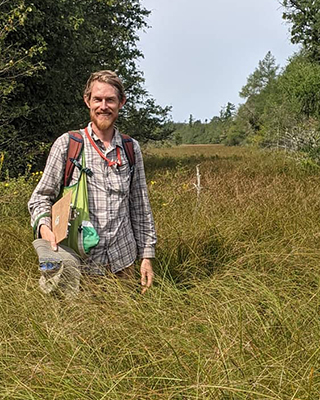The John J. Brander and Christine E. Rundblad Research Fellowship Program at the Milwaukee Public Museum seeks to stimulate fundamental research by scientists doing research on Wisconsin biodiversity or environmental issues, especially those that utilize and strengthen the natural science collections at MPM.
 Dr. MICHAEL PAUERS
Dr. MICHAEL PAUERS
Population Dynamics and Genetic Diversity of a Captive Population of the State Threatened Northern Sunfish, Lepomis peltastes: A Citizen Science Approach to Conservation
The northern sunfish (Lepomis peltastes) is a small, colorful sunfish that is threatened in Wisconsin. While it is relatively secure in the southern part of the state, it is extirpated, or extremely rare, throughout most of its former range in the state. Although this species is reasonably secure in the Mukwonago River in Waukesha County, it is vulnerable to population declines due to habitat loss and siltation. In light of this tenuous situation, in September of 2014, the Wisconsin Department of Natural Resources transplanted 50 individuals from the Mukwonago River to a fishless pond on the grounds of the Milwaukee County Zoo. These fish were moved to the Zoo to serve as a refuge population, in case of the sudden and unpredictable loss of individuals or habitat in the Mukwonago River.
This captive population has been unobserved and unmanaged for several years. To ensure that it remains viable, Dr. Pauers will compare the size structure, sex ratio, and genetic diversity of the captive population to that of the source population of the Mukwonago River. Perhaps most importantly, this will be done in part by engaging students from the Milwaukee Public Schools, most of whom come from backgrounds largely underrepresented in the sciences.
 Dr. KEIR WEFFERLING
Dr. KEIR WEFFERLING
Peatmosses (Genus Sphagnum, Sphagnaceae) of Wisconsin
The Milwaukee Public Museum Herbarium is regionally significant, housing nearly 5,000 bryophyte (moss, liverwort, and hornwort) collections, mainly from Wisconsin. Among MPM's collections, more than 400 are peatmosses—the genus Sphagnum—an ecologically important and evolutionarily distinct lineage especially important in Great Lakes peat-accumulating wetlands. There are between 30–36 species of Sphagnum that have been collected and identified in Wisconsin, and 27 species are listed in the MPM collections from Wisconsin, Michigan, and Minnesota.
Dr. Keir Wefferling, Curator of the Fewless Herbarium at UW-Green Bay, is working on a survey and re-evaluation of Sphagnum in the region. A checklist and database of photographs—including both field- and micro-photographs—will support work on the integration of bryophytes into floristic quality assessments in the western Great Lakes region. Knowing what species of peatmoss are present in Wisconsin and collecting preliminary data on where they grow—both in terms of sites and natural communities—will allow for greater confidence in field identification and support training in bryophyte identification, both for students and land managers.

